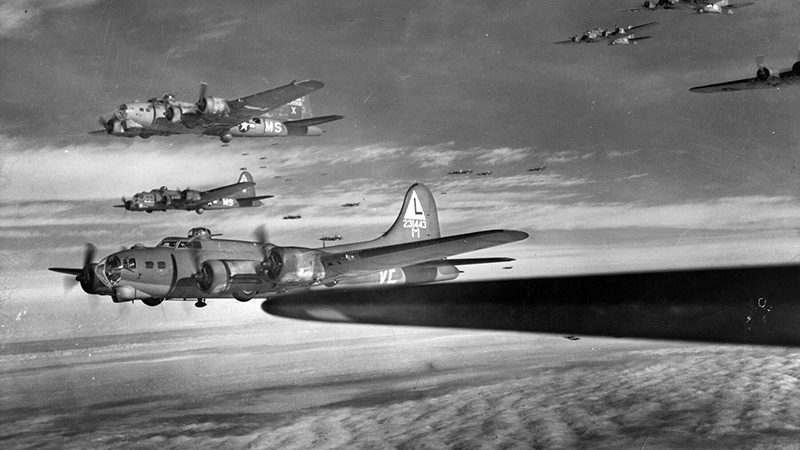
As expected, the FAA has grounded all flights by any airworthy Boeing B-17 due to an issue with the
iconic airplane’s wing spars. While the chances of you seeing any B-17s gracing the skies during a
summer airshow is slim to none let us take a moment to honor this legendary bird!
The Boeing B-17 Bomber, also known as the Flying Fortress, is a famous American heavy bomber that
was primarily used during World War II. It was developed by the Boeing Aircraft Company in the 1930s
and played a significant role in strategic bombing campaigns against Germany and Japan.
Here are some key features and information about the Boeing B-17 Bomber:
1. Role: The B-17 was designed as a long-range bomber capable of carrying a large bomb load. Its
primary role was to conduct daylight precision bombing missions against enemy targets, such as
industrial facilities, military installations, and infrastructure.
2. Crew: The B-17 had a crew of typically ten members, including the pilot, co-pilot, bombardier,
navigator, radio operator, and multiple gunners.
3. Defensive Armament: The B-17 was heavily armed for self-defense. It featured multiple machine gun
positions, including top, bottom, front, and waist gun positions. The number of guns varied across
different models, but it could have up to 13 .50 caliber machine guns.
4. Strategic Bombing Capability: The B-17 had a maximum bomb load capacity of around 8,000 pounds
(3,600 kg) and could carry various types of bombs, including high-explosive, incendiary, and
fragmentation bombs.
5. Range and Endurance: The B-17 had an impressive range for its time, capable of flying up to 3,750
miles (6,040 kilometers) without refueling. This enabled it to reach targets deep inside enemy territory.
6. Durability: The B-17 was known for its rugged construction and ability to sustain significant damage
and still return to base. It had self-sealing fuel tanks and armor plating in vital areas to protect the crew.
7. Operational History: The B-17 played a crucial role in the Allied bombing campaigns during World War
II. It was used extensively in the European Theater, particularly in missions over Germany. The B-17 also
saw action in the Pacific Theater against Japan.
8. Famous Missions: The B-17 is associated with several notable missions, including the famous
"Memphis Belle," which completed 25 successful bombing missions over Europe, and the disastrous
bombing raid on Schweinfurt, Germany, known as the "Black Thursday" mission.
9. Post-War Service: After World War II, the B-17 remained in service with the United States Air Force
and other air forces around the world for some time. Some B-17s were converted for civilian use, such
as cargo transport and aerial surveying.

